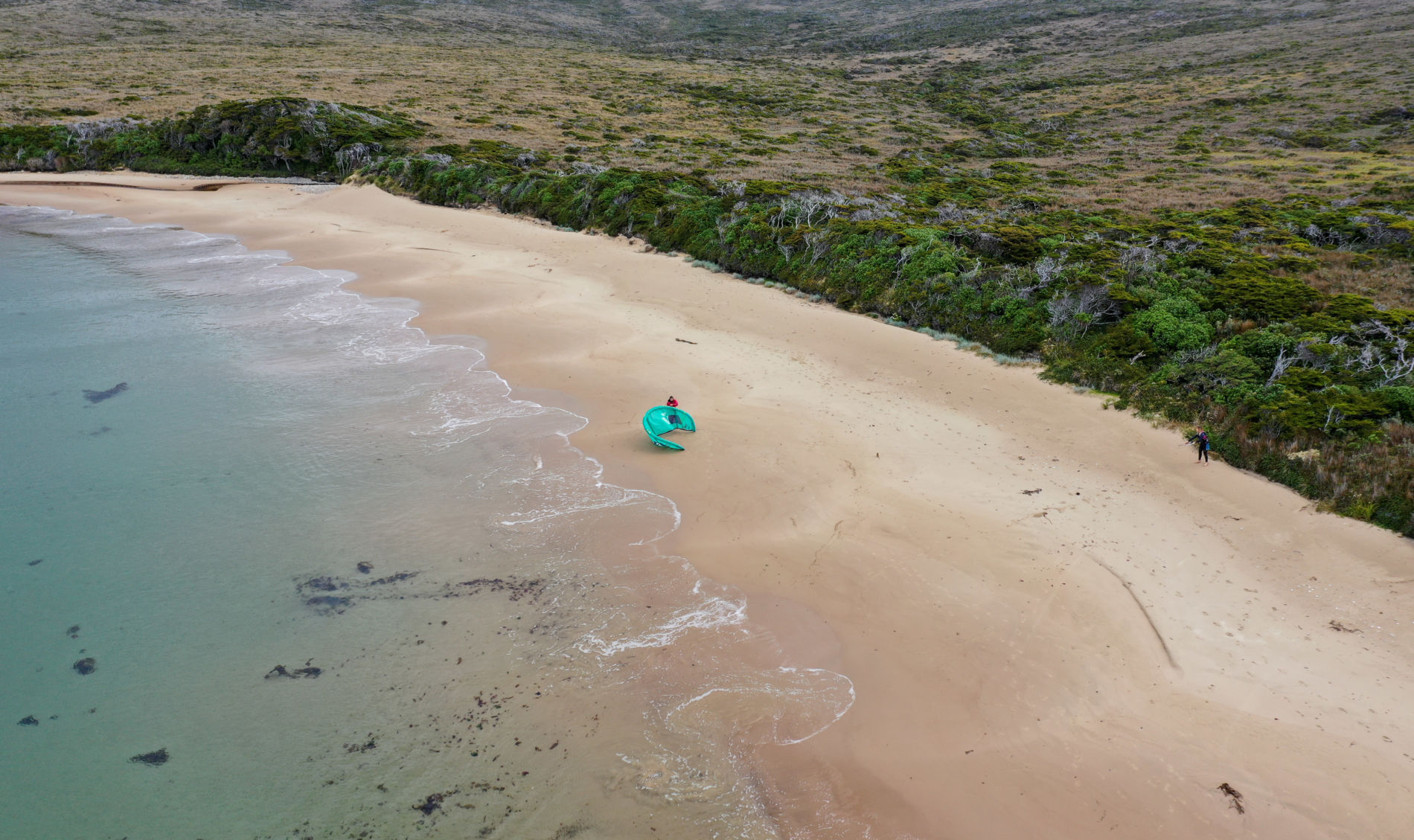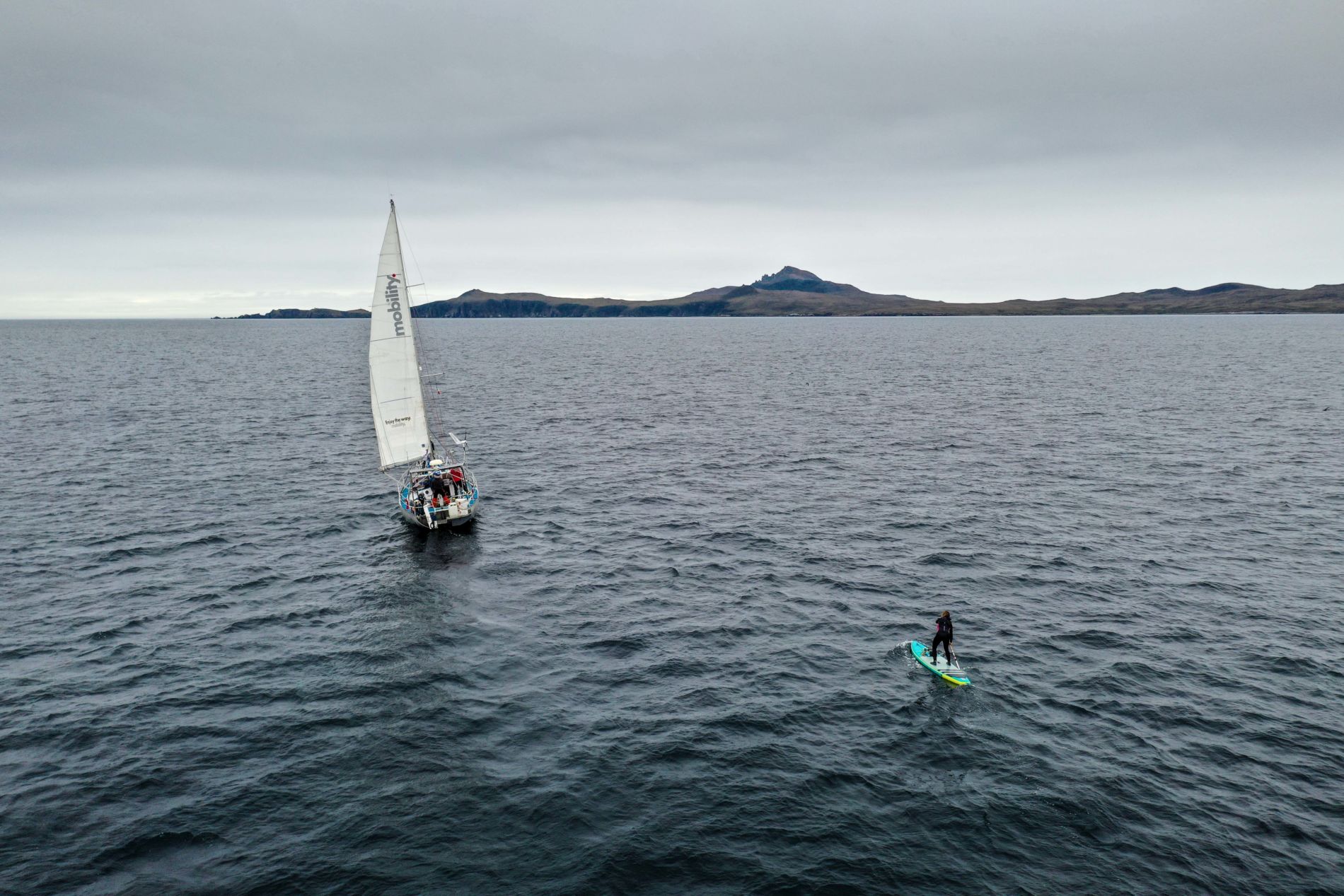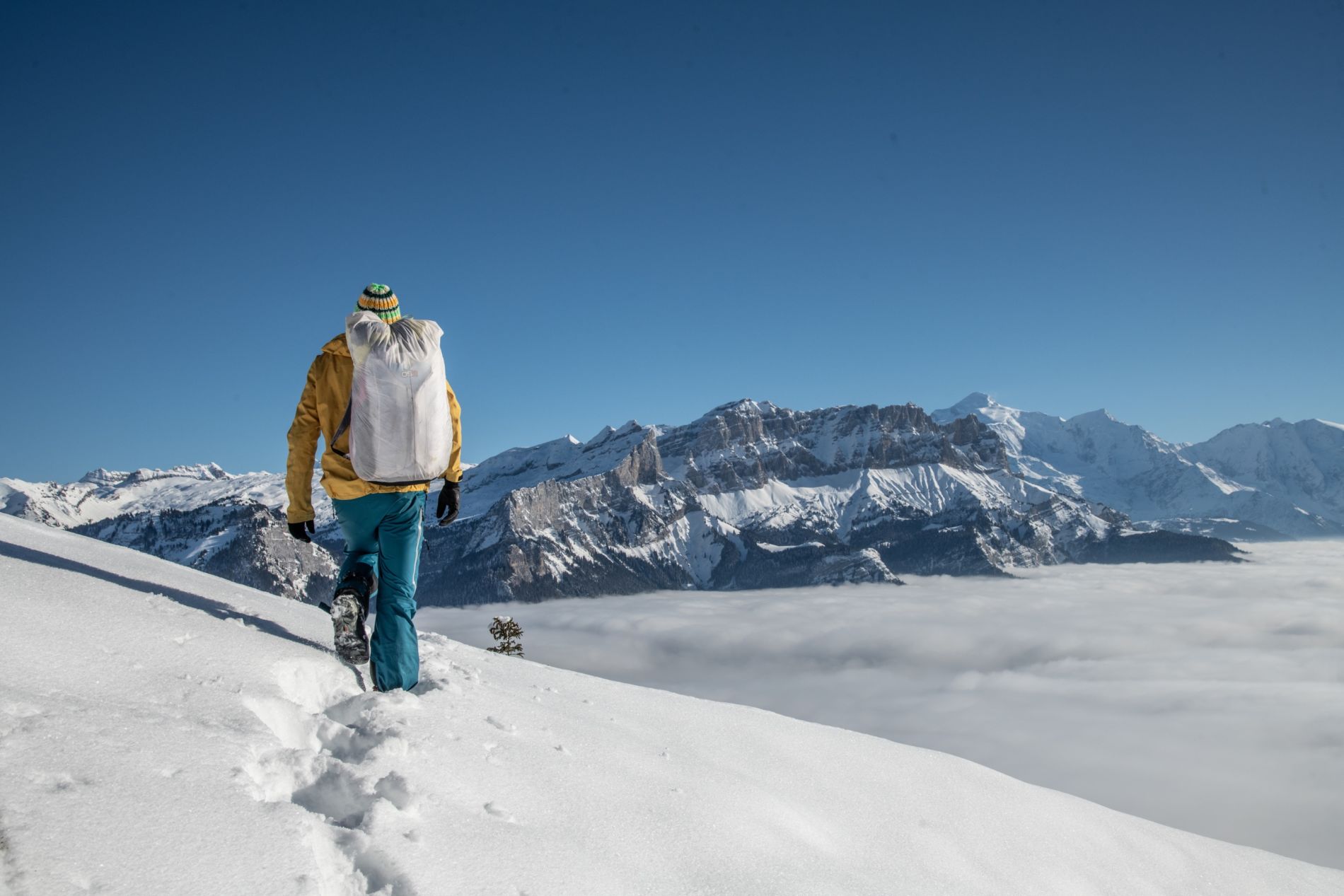Fancy a bite of salmon? An insight into the sanitary and environmental disasters caused by aquaculture
It used to be a delicacy, but today it is widely accessible. It is France’s favourite fish. We are obviously talking about salmon!
Its ever-decreasing price reflects the evolution of its production over the last few decades. Across the world, more than half of all salmon sold comes from fish farms. So it is very likely that the last piece of salmon you ate came from intensive aquaculture.
So, is it still beneficial to eat salmon?
Wild salmon, farmed salmon, what difference?
The breeding of Atlantic salmon has been a controversial issue for a long time. The impact of salmon farming on the environment remains a subject of debate, particularly because of the impact of its production, such as local pollution caused by chemical treatments or the spread of diseases to other fish.
Salmon farming emerged in the 1970s in Norway and Scotland. It was originally intended to repopulate rivers and was subsequently converted to farming. Today, it is claimed that Norway controls almost 90% of Atlantic salmon production with 650 farms spread over the country’s 21,000 km of coastline, a market worth 5.3 billion euros, with a production of over 1.4 million tons.
Is there a significant difference in terms of nutrition between farmed and wild salmon? Well, it all depends on the type of farming, the environment in which the fish are kept, the treatments they are given and their diet. But as you might expect, the nutritional profile of wild salmon can be quite different from that of farmed fish.
According to Pierre Calleja, a microalgae biotechnology doctor, wild salmon usually contains many more minerals, such as potassium, zinc and iron. Farmed salmon, on the other hand, is higher in fat, with slightly higher levels of omega-3 and much higher levels of omega-6. As a result, it is generally more calorific than wild salmon.
Wild salmon can only be caught at the age of four or five. For farmed salmon, the conditions are quite different, as they first spend a year in fresh water, before moving to saltwater cages where they grow for two years, while half of the salmon’s diet is of animal origin (including fishing detritus, dead or undersized fish).
To produce one kilo of farmed fish, it would take the equivalent of 4 kilos of wild fish in terms of nutrients (flour and oil).
An industry at peril?
Since the 1980s, fish consumption has tripled. The stocks of wild salmon are now very low, critical even. In the last 30 years, wild salmon stocks have dropped by 75% in the North Atlantic. Many factors are to be taken into account, such as pollution, overfishing, but also the deterioration of their natural environment.
According to the World Wildlife Fund (WWF), repopulating the seas and rivers with wild salmon would enable us to meet the ever-increasing demand: this was the initial objective of salmon farming in the 1960s.
However, aquaculture soon became an intensive farming industry like any other, causing health and environmental problems which we all know about. Although aquaculture practices have generally improved, there are still issues related to the release of large amounts of faeces as well as pesticides and antibiotics.
It is therefore necessary to develop “sustainable” fishing, which would allow this sector to remain viable. WWF encourages companies to improve their sourcing policies and more specific to commercialise fish labelled as MSC and ASC.
These two labels are supposed to guarantee that seafood products are caught or farmed with the greatest respect for people and the environment.
However, how do you find your way around the fish section of your supermarket? Are all the labels reliable? What are the risks of eating farmed salmon?
How to make the right choice?
Based on which criteria should we choose our salmon? Label, colour of the flesh, how to make the right choice?
There are 7 varieties of salmon that are regularly found in our plates and despite what you may think, the colour does not determine its quality. We therefore need to look at other criteria to help us make the right choice.
There are multiple labels that guarantee the quality of your salmon, whether it’s on the shelves of your supermarket or at your local fishmonger’s. It can be difficult to find your way round. Let’s take a look at some of these labels…
Selim Azzi, sustainable fisheries project manager for WWF France, told Le Parisien about this label issue: “Bio(AB): The green label refers to the farming. To be organic, a fish must, among other things, eat organically and not have undergone any pesticide and/or dye treatment. MSC (Marine Stewardship Council): Its blue label concerns wild fish and guarantees that they come from sustainable fishing. Its aim is to counteract overfishing. “
And the Red Label? “The label guarantees superior quality by means of strict specifications. The only problem is that in the case of farmed salmon, this label requires that the fish’s diet to be composed over 50% of fish oil and flour and therefore encourages overfishing” However, despite this, none of these labels consider the impact of water pollution caused by this industry.
Recently, WWF congratulated the Carrefour group for introducing the ASC (Aquaculture Stewardship Council) label onto its shelves. For the NGO, this label is the most reliable and most demanding, as it respects strict criteria: fish-based food that is traced and does not come from stocks that have suffered from overfishing, a suitable environment, a low mortality rate during breeding, satisfactory water quality and living conditions for the fish, antibiotics only for sick animals and under veterinary supervision…
Choosing a salmon would therefore not be such a hassle, all you would have to do is look at the labels. But is it that simple?
Is salmon still a health food?
Even if a label is often a sign of good quality, it should not be taken for granted. In 2016, the scandal broke and it was the French magazine “60 millions de consommateurs” that made the front page!
It all began after an analysis of 10 salmon steaks and 15 smoked salmon from supermarkets originating from Norway, Ireland or Scotland, both conventional and organic, with a red label or certified as responsible.
It was surprising to find that some of the salmon sold with the organic label had higher levels of metals such as mercury and arsenic than non-organic farmed salmon. This is explained by the feed given to these fish, which is said to be made up partly of animal flours and oils originating from wild fish that are likely to accumulate these residues.
Unlike what one might think, the feed for organic salmon is composed of fish flour and vegetable oil (50/50), whereas salmon from non-organic fishing farms has a ratio of 75% vegetable oil and 15% fish flour, which explains the traces found in organic salmon.
The road to hell is paved with good intentions: the desire of organic salmon farmers to offer their fish a diet close to that of wild salmon has turned out to be a worse idea than expected: the small fish used to create the meal for the organic salmon’s kibble are contaminated upstream by pollution of the marine environment.
In addition, the magazine found traces of dioxins and PCBs recognised as carcinogenic to humans by the International Agency for Research on Cancer (IARC), as well as endocrine disruptors. Even if all these doses do not exceed the legal limits, it is legitimate to ask why these salmon are labelled as organic.
Non-organic salmon is not any better, as Norwegian researcher Victoria Bohne has made a strange and worrying discovery: she has found traces of ethoxyquin in farmed salmon. Ethoxyquin is a pesticide marketed by Monsanto in 1959, but which was banned in 2012. However, it is still used as an antioxidant in the fishmeal preservation process.
An hour after eating salmon, Victoria Bohne draws off her breast milk and decides to analyse it. Traces of ethoxyquin were found. After tests on rats, she found that this pesticide can directly affect the brain. EFSA, the European Food Safety Agency, issued an evasive report on the subject, mentioning that the substance was probably carcinogenic, but did not elaborate…
Another scientist, Jérôme Ruzzin, a researcher in Toxicology at the University of Bergen, tested several groups of food products sold in Norway and found that farmed salmon contained the highest amount of toxins.
It is clear that overall, farmed salmon is five times more toxic than any other food product tested! In animal feeding studies, mice that were fed farmed salmon become obese, with thick layers of fat around their internal organs. They also developed diabetes.
So, if we are aware of the severity of the consequences of ingesting this pesticide, why is no policy action being taken? Well, according to Martin Pigeon, who works for the NGO, Corporate Europe Observatory, the public authorities do not have the means to carry out and launch their research on ethoxyquin, especially given the power of the industry’s lobbies.
Despite these rather frightening findings, scientists believe that the nutritional quality of salmon is still genuine. It is a source of good quality essential fatty acids (omega 3 and 6) and also contains vitamins A, B and D as well as minerals such as calcium and phosphorus.
According to Figaro Santé, it is necessary to vary the species and diversify the locations of supply. This is to limit overexposure to contaminants, but also to cover our nutritional needs.
The National Agency for Food, Environmental and Occupational Health Safety (Anses) recommends eating fish twice a week, including oily fish (salmon, sardines, mackerel, etc.).
Although farming conditions have improved over the last few years, you are now warned to choose your salmon with care and not to overdo it!
Intensive aquaculture, an environmental disaster
Well, that’s it for the plate. But what about the planet? Several scientists are warning about the environmental consequences of this industrial production of salmon!
According to the doctor Pierre Calleja, farming on such a massive scale is bound to have consequences on the environment, because unfortunately it is not possible to do so without chemicals. This never-ending race to produce more and more salmon is leading to pollution of the marine environment, which is destroying everything in its path.
Norwegian farmed salmon is particularly blamed. Known for several years as highly polluted, it contains more heavy metals than natural fish and is also contaminated by an insecticide used to treat parasites: diflubenzuron.
This substance is highly toxic to aquatic organisms.
Kurt Oddekalv, a Norwegian environmental activist, can only agree with this, and even speaks of a disaster for both the environment and human health, since ” underneath the salmon farms dotted across the Norwegian fjords, there is a 15-metre-high layer of waste, overflowing with bacteria, drugs and pesticides. In short, the entire seabed has been destroyed, and since farms are located in open waters, the pollution from these farms is not under control. ”
The production of salmon farms therefore has severe impacts on the environment. The Chilean case illustrates this environmental disaster. Chile is the world’s second largest producer of salmon after Norway, with around 26% of global supply.
Investigation into the production of Chilean salmon
Last April, the whole world discovered the environmental disaster taking place in Chile.
As we reported back in February, in our article “Journey to Tierra del Fuego“, marine culture is central to Chile. The Chilean coastline, which stretches for more than 5,000 kilometres, is home to a wide variety of marine life .
However, in recent decades, salmon farms have multiplied everywhere to such an extent that Chile is now one of the largest aquaculture countries in the world after Norway. In just a few years, the country has gone from traditional small-scale fishing to intensive salmon farming. In 2020, salmon exports brought in 4.4 billion dollars (3.7 billion euros) for Chile.
This drastic change in fishing methods, from an artisanal system to industrial fishing, has had many repercussions on the environment.
While passing through this region for our expedition, the Maewan crew looked into the issue of salmon farming in Chile. A documentary is currently being prepared and will soon be available on your screens. An unfortunate coincidence: a few weeks after our passage, one of the biggest disasters in the world of aquaculture was about to take place in Chile.
In April 2021, more than 5,000 tonnes of salmon died, victims of a killer algae spread across 18 farms in the south of the country, according to the Chilean National Fisheries and Aquaculture Service (Sernapesca). The deaths were caused by the proliferation of harmful algal blooms (HABs), which lodged in the gills of the fish and caused them to die of asphyxiation.
The NGO Greenpeace says that this dramatic episode is certainly due to the pollution produced by salmon farming and not just climate change, as the Chilean industry has claimed. According to Maurico Ceballos, spokesperson for Greenpeace, “With the repetition of this type of crisis, the influence of pollution produced by salmon farming is undeniable. It has been proven that the presence of ammonium and urea from salmon farming in closed or little frequented fjords can increase the proliferation of the species (of algae) detected.
It is therefore a real ecological and health drama that is taking place in Chile. So how many dramas like this one will it take before the industry truly moves to a more sustainable production method?
By 2023, 4 million tonnes of salmon will be consumed worldwide. This forecast shows that consumption of this fish is increasing at a constant and significant rate. It is therefore essential to rethink aquaculture and go back to basics, since there is no real certification today that guarantees healthy salmon raised under sustainable conditions.
Sources :
https://www.wwf.fr/vous-informer/effet-panda/enfin-du-saumon-delevage-responsable-dans-les-rayons
https://www.leparisien.fr/societe/se-reperer-dans-les-labels-26-09-2016-6149887.php
https://pierrecalleja.fr/la-verite-sur-les-elevages-de-saumons/
http://www.ideemiam.com/actus/a-lire/saumon-bio-contamine-enquete-60-millions-consommateurs.html
https://www.sante-nutrition.org/saumon-delevage-lun-aliments-plus-toxiques-monde/
See also
While the adventure in Tierra del Fuego ended just a few weeks ago, let’s take a look back on the highlights of this epic journey. Joining the Maewan sailboat and ... Explore
Explore
Once upon a fabulous Patagonian adventure
 Explore
Explore
Cape Horn: A legendary cape
 Explore
Explore
